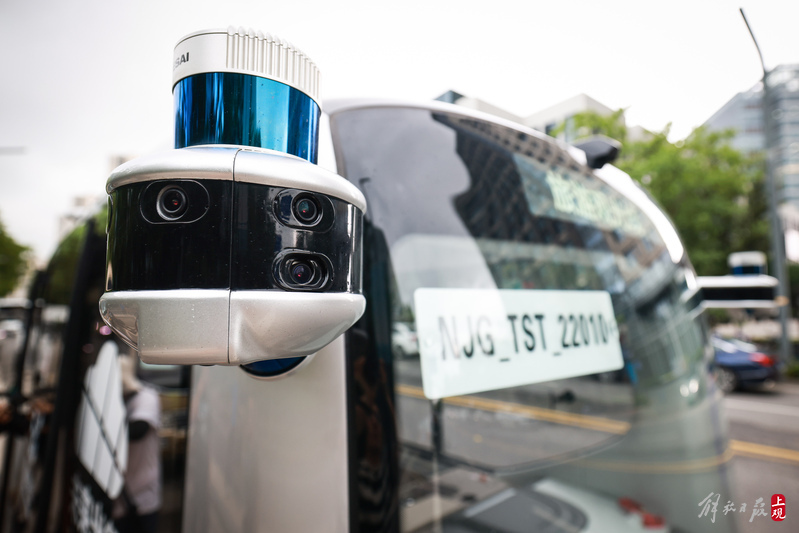Is India considered a space power?, After landing on the moon, the first solar probe was launched again
Pengpai News special contributor Lin Sen
After successfully landing on the moon, India launched its first solar probe.
On September 2nd local time, India successfully launched its first solar probe, the Sun God L1, into its designated orbit using a PSLV carrier rocket. The probe will take four months to reach Lagrange L1 and then begin its observation mission.
Previously, the Indian lunar probe Chandrayaan-3 made a soft landing on the surface of the South Pole of the Moon, becoming the fourth country in the world to successfully land on the moon.
This has also sparked discussions about whether India will become a space power.
India's first solar detector.
After landing on the moon, the first solar probe was launched again
On August 28th, the Indian Space Research Organization announced that the Chandrayaan-3 probe detected sulfur on the lunar surface near the South Pole, which is an important discovery for India.

As a probe that once again challenged the soft landing on the moon after the failure of Luna 2, India has made targeted modifications and upgrades based on Luna 2, such as adding fuel, adjusting the power system, and a series of measures. The highest goal is to successfully land on the moon, and scientific exploration is the second goal. In order to ensure the success of landing on the moon, the payload of scientific exploration has been reduced, and the lunar rover only needs to work for 14 days.
Photos taken by the Indian lunar rover of the lunar rover's lunar rover on the third lunar lander.
The launch mass of lunar rover 3 is about 3.9 tons, with a propulsion module mass of 2145 kilograms and a lander mass of 1749 kilograms. The lander includes a 26 kilogram lunar rover. The lunar lander, HMS-3, is equipped with a Langmuir probe for measuring plasma density and changes, as well as a Chandra surface thermophysical instrument for measuring thermal conductivity and temperature, and a lunar seismometer for measuring lunar seismic activity in the landing area. Its aim is to conduct in-depth research on the lunar geology, magnetic field, and physical environment in the surrounding space. The lunar rover is equipped with an alpha particle X-ray spectrometer and a laser induced breakdown spectrometer. APXS and LIBS will be used for in-situ lunar exploration, especially LIBS, which can quickly obtain information on material element composition through non-contact exploration and study the cost of lunar soil and rocks on the lunar surface.
How to view the success of the lunar landing on the third lunar vessel, there have been various voices on the internet: some do not believe that photos of India's successful moon landing are fake and have not been successful; Some also believe that India is just lucky, with no one landing on the moon and no sampling return, it's not a big deal; Some voices also believe that India's successful landing on the South Pole of the Moon under a relatively low budget is commendable, and should see progress in India's aerospace industry.
In the author's opinion, for India, the successful landing of Luna 3 on the moon is undoubtedly a major event recorded in Indian space history, and even in human space history, there will be different records. After all, the first successful landing near the South Pole of the Moon was achieved. Coincidentally, Russia's Luna Ball 25 also landed on the moon in August at the South Pole of the Moon, and Luna 25 started later but ended in failure. With the support of excellent peers, the success of Luna 3 is even more eye-catching. The author agrees with the statement that progress in Indian aerospace should be seen.
After the successful lunar landing of the lunar vessel, India launched its first probe to study the sun on September 2nd. According to reports, the "Sun God L1" probe, weighing about 1.5 tons and carrying 7 scientific payloads, is designed to study the solar photosphere, chromosphere, solar wind, solar corona, and interplanetary magnetic field. The Helios L1 probe will be launched into Earth's near Earth orbit by a polar launch vehicle, and then the probe will change its orbit and fly to Lagrange L1, a process that will take approximately 4 months.
Is it a space power or a space power
The successful implementation of lunar landing, launch of the first solar probe, Mars exploration, and establishment of an Indian navigation satellite system, with plans for the first manned space launch next year, has resulted in many achievements in Indian space and ambitious future plans. So, is India now considered a major aerospace country or an aerospace powerhouse?

When it comes to becoming a space power, some readers may recall an exciting official news from the beginning of this year: China has fully built itself into a space power, entered the ranks of world space powers, and embarked on a new journey of comprehensively building a space power. Behind the official announcement of this aerospace powerhouse is the remarkable achievements of China's multiple aerospace projects in recent years: the successful launch of the Long March 5 large carrier rocket, the comprehensive completion of the Beidou-3 global navigation system, the successive lunar landings of Chang'e-4/5, the landing of the Tianwen-1 Mars probe, the full completion of the first manned space station, and the completion of the high-resolution Earth observation system space segment
What are the standards for a strong aerospace country? In fact, there is no authoritative standard to evaluate a space power. It is generally believed that space power usually has the world's advanced space transportation capabilities, can implement deep space exploration projects such as lunar sampling and return, Mars landing exploration, asteroid exploration, etc., build and operate space stations, space assets become national infrastructure, and comprehensively serve economic, social, and national defense construction. Behind these "iconic" events, lies a country's advanced manufacturing capabilities in design, technology, and materials, as well as its collaborative research and development capabilities in multiple systems such as spacecraft, launch sites, and measurement and control.
As for space powers, space experts believe that the first step is to have independent spacecraft launch capabilities, which can launch multiple orbits; Secondly, whether various spacecraft such as satellites and spacecraft launched into space are usable, and whether the satellite type spectrum is complete and has entered the practical stage; The third is research and development capability, which includes research and development, production, and testing capabilities; And it has relatively complete ground support facilities and systems, as well as launch sites and measurement and control systems.
Let's first talk about India's launch vehicles. In 1980, India used domestically produced SLV launch vehicles to launch a 35 kilogram satellite into space, becoming the seventh country in the world to use its own rocket to launch a satellite into space. The rockets currently in use in India include PSLV, GSLV-MK2, and LVM3. The PSLV has a low Earth orbit carrying capacity of approximately 3.7 tons and a sun synchronous orbit carrying capacity of approximately 1.7 tons. The GSLV-MK2 geostationary orbit has a carrying capacity of only about 2.5 tons, which is relatively rare to use.
The Indian LVM3 carrier rocket was launched into space.
LVM3 is currently the rocket with the largest carrying capacity in India, with a takeoff weight of 640 tons, a geostationary transfer orbit carrying capacity of 4 tons, and a near Earth orbit carrying capacity of 8 tons. It can be seen that the carrying coefficient is not high, and there is a significant gap compared to foreign rockets of the same class. As a comparison, China's Chang3B rocket has a maximum takeoff weight of 456 tons, but its geostationary transfer orbit carrying capacity reaches 5.5 tons, surpassing the LVM3 rocket, which has a larger takeoff weight than itself. At present, many mainstream high-capacity communication satellites generally weigh over 5 tons, and LVM3 cannot be launched. Indian communication satellites weighing over 4 tons can only rely on foreign rockets for launch, otherwise they will have to adapt to the situation. In addition, currently India does not have large launch vehicles with a carrying capacity of over 20 tons. Without such rockets, India would not be able to independently carry out deep space exploration missions such as lunar sampling and return. Space powers such as China, the United States, and Russia all have these types of rockets.
In terms of satellites, India has launched various types of application satellites such as remote sensing satellites, navigation satellites, meteorological satellites, and communication satellites, but the number of satellites is only 108, far lower than China and the United States. The degree of satellite localization is also relatively low, and the navigation satellite constellation is only for regional navigation and does not have global satellite navigation capabilities. In terms of deep space exploration, although India has launched Mars and lunar probes, there is no systematic planning. For example, after the successful launch of the Mars exploration "Mangrian", there was no further exploration plan proposed, and the continuity was not strong. On the other hand, China's Tianwen-1 mission completed "circumnavigation and return" in one mission, and it is also clear that it will launch the Tianwen-3 mission to achieve Mars sampling and return.
In terms of manned space, India is currently implementing a manned space program called "Gagan Yang". The original plan was to launch a manned spacecraft in 2022, sending two astronauts into space. India hopes to become the fourth country after China, the United States, and Russia to independently send astronauts into space. For this reason, India is developing manned spacecraft and manned launch vehicles, and work on landing sites, astronaut training, and other aspects is also being carried out simultaneously. However, due to technical and other reasons, it has been postponed until 2025. Some aerospace experts have said that a manned space station is one of the symbols of a space power, and India has not yet achieved its goal of independently sending astronauts into space, let alone a manned space station.

In summary, India cannot be considered a space power, but can only be considered a space power, and it also ranks last among space powers, behind France and Japan.




